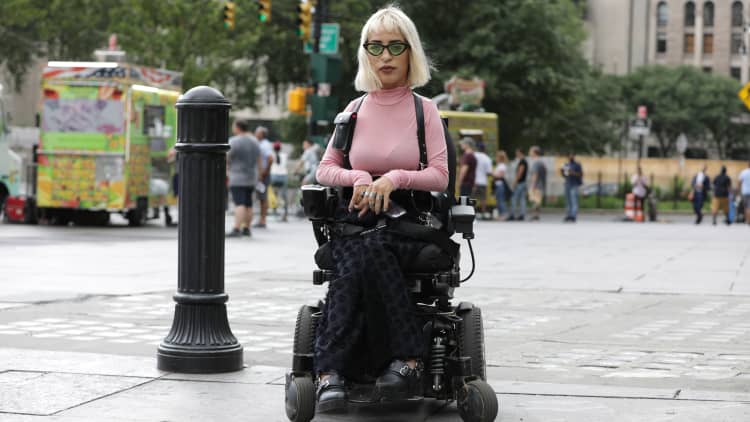One in four U.S. adults has a disability which impacts major life activities, according to the Centers for Disease Control and Prevention, including difficulty in hearing and seeing, in mobility like climbing stairs, in cognition like concentrating and in living independently and taking on activities like dressing. Altogether, 61 million Americans have a disability.
Despite the added challenges in day-to-day life, much of this population can work — and wants to. But many encounter challenges in their attempts. In 2022, only 21.3% of the population of people with disabilities was employed, according to the Bureau of Labor Statistics.
For some, this might be a matter of health care. Those in the community who rely on Medicaid might be afraid to lose their benefits if they exceed a certain financial limit. But for others, it's a matter of hiring.
Here are a few reasons this population's employment rate remains low and what employers can do to ensure they are hiring equitably.
For some employers, it's about bias
There are multiple reasons so few members of the community are actively in the workforce. First, this population faces various biases that prevent employers from hiring them.
"There is this bias that so many of us have and much of it's unconscious that somebody who is a wheelchair user cannot do a job as well as somebody who's not," says Jessica Tuman, vice president of Voya Cares, a program within financial planning company Voya Financial dedicated to people with disabilities.
In fact, "studies have shown that people with disabilities are actually more loyal," she says. "They are just as productive if not more and have much less turnover in their roles."
They also help the bottom lines of their employers. On average over a four-year period, companies whose workforce included people with disabilities had revenues 28% higher than those who didn't, according to a 2018 report by IT and consulting company Accenture.
For others, it's about the bottom line
While considering applicants from the pool of people with disabilities, employers might assume their employment could get expensive.
"Screen readers, visual aids, hearing aids, a standing desk," says Tuman, "all of these things are what we call reasonable accommodations. One misconception is that these accommodations are really, really costly." Employers can be put off by that, she says.
In fact, accommodations for people with disabilities typically cost just $500, according to the Society for Human Resource Management. "That's very doable for most employers," says Tuman, who adds that many of these employees "actually come into the workplace with their own accommodations."
'Recruit from LinkedIn'
When it comes to hiring on the employers' side, companies can allocate resources to ensuring their HR practices are fair and inclusive. DEI workplace consultant Kim Crowder recommends using LinkedIn.
"We have some folks who are strong advocates, who openly talk about their disabilities and their impact in their professional lives," she says. "Recruit from LinkedIn." She also recommends hiring a DEI consultant who can advise about where to seek out potential employees in the community.
Crowder also emphasizes the importance of ensuring company culture is open and inclusive. She recommends looking for workplace resources through organizations like the American Association of People with Disabilities as well as the Americans with Disabilities Act website.
Tuman recommends employers seek out inclusivity training by organizations like Disability IN and the Job Accommodation Network.
"The truth of the matter is, it is a choice, right?" says Crowder about companies' attitudes toward inclusivity of any group. "Are we going to be an organization that builds access?" she says.
"That's a yes or no question."
DON'T MISS: Want to be smarter and more successful with your money, work & life? Sign up for our new newsletter!
Check out:



